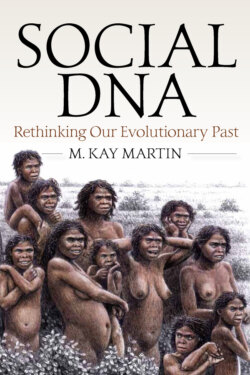Читать книгу Social DNA - M. Kay Martin - Страница 12
На сайте Литреса книга снята с продажи.
Ecology Drives Social Forms
ОглавлениеTraditional theories on human social evolution often weave the mating and economic dimensions of reproductive success into a single fabric, one that assigns a primary role to male inclusive fitness. In this view, ancient genetic propensities that wed male sexual and economic dominance are proposed to define not only the dawn of human kinship and the division of labor, but much of what drives contemporary reproductive behaviors. The resultant social forms proposed as primal markers of humanity thus become monotypic or one-dimensional, with exceptions viewed as aberrant or unnatural. Such models create a single Paleolithic prototype that is largely impervious to ecological variation.
In contrast, the multilevel selection perspective advanced in this book provides a framework for understanding the factors that impact the inclusive fitness of both sexes and the variable structuring of social relationships based on common kinship. A basic assumption is that human sociality evolved as a vehicle for reproductive success. Selective factors operated to increase fitness by not only structuring mating behaviors and relationships among close kin, but by structuring relationships among community members in a manner that optimized their procurement and distribution of fitness-related resources, such as energy, materials, genes, and information. Hominins evolved epigenetic playbooks, or social DNA, the phenotypic expression of which calibrated social systems with the nature and availability of critical resources in a given niche. The architectural types of human social groups have been limited in time and space and have conformed to a finite set of rules. Mating relationships may be predominantly monogamous, polygynous, polyandrous, or polygynandrous.8 Similarly, social forms that define economic units and access to resources are of limited types. For most of prehistory, they have been based on the recognition of either uterine (related female) or agnatic (related male) kinship. While the number of social DNA variants (“epialleles”) is small, their phenotypic expression is plastic and importantly linked to ecological conditions.
Pleistocene habitats on the African and Eurasian continents were both dynamic and diverse. Some were arid, some well-watered. Some offered year-round abundance, others only seasonal or scant resources. All were subject to climatic events that choreographed the changing demographics of species. This book proposes that hominin populations occupied a wide range of niches throughout their evolutionary development. Social DNA or epigenetic mechanisms of inheritance provided evolving humans with the capacity to flex their social strategies in characteristic ways to meet the challenges presented by changing landscapes. The social forms that structured these adaptations, namely, multigenerational kinship units, are of limited types. Uterine and agnatic social organization have distinct demographic, social, and political consequences that correlate with ecological factors. Their phenotypic expression should therefore be predictable in general outline. The final chapter of this book explores the rise and fall of Paleolithic kinship groups and the ecological dynamics on which they may have been predicated.
